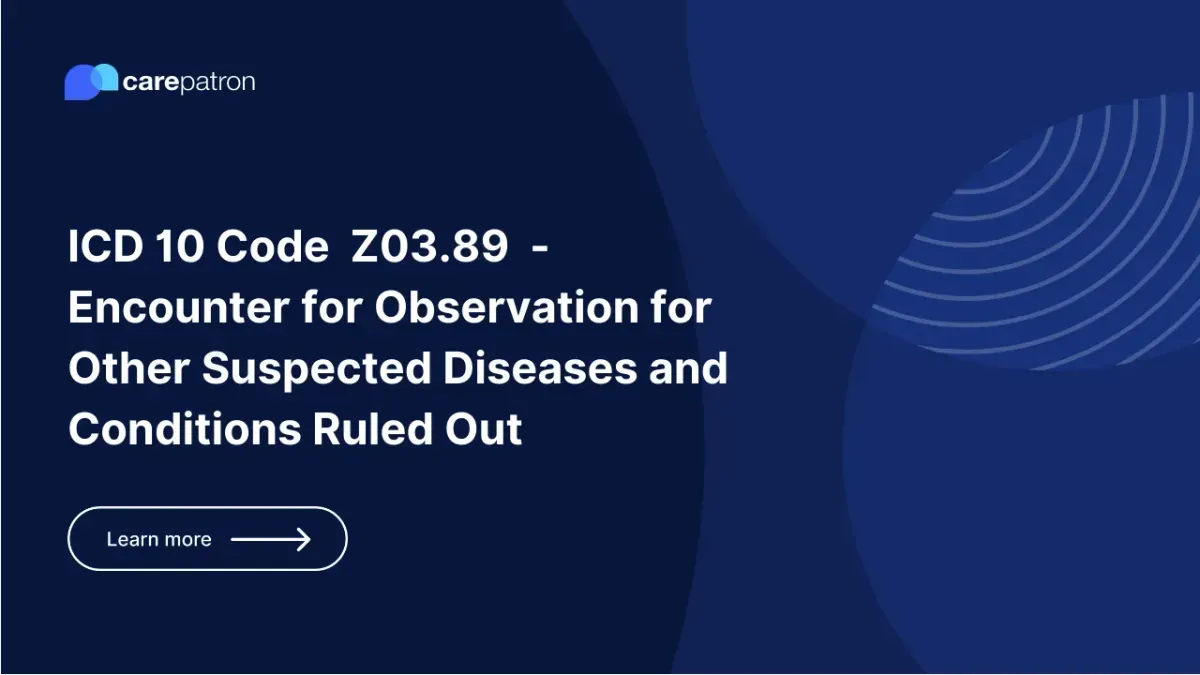
Z03.89 – Encounter for observation for other suspected diseases and conditions ruled out
Learn more about Z03.89: Encounter for observation for other suspected diseases and conditions ruled out ICD-10-CM. A vital tool for medical coding and billing.
Use Code
Commonly asked questions
The diagnosis code Z03.89 is used when a patient is observed due to suspicion of a certain disease or condition, but this was ruled out after evaluation.
As Z03.89 refers to an encounter for observation for other suspected diseases and conditions ruled out, it does not pertain to a particular disease or condition requiring treatment. The person underwent evaluation and was observed and possibly tested due to suspicion, but no actual disease or condition was found.
The ICD-10-CM code Z03.89 signifies an encounter where a patient was observed due to suspicion of a particular disease or condition, but after examination, this was ruled out. The code provides a way to record and classify this encounter for healthcare purposes, including billing, data collection, and health services planning.
EHR and practice management software
Get started for free
*No credit card required
Free
$0/usd
Unlimited clients
Telehealth
1GB of storage
Client portal text
Automated billing and online payments
